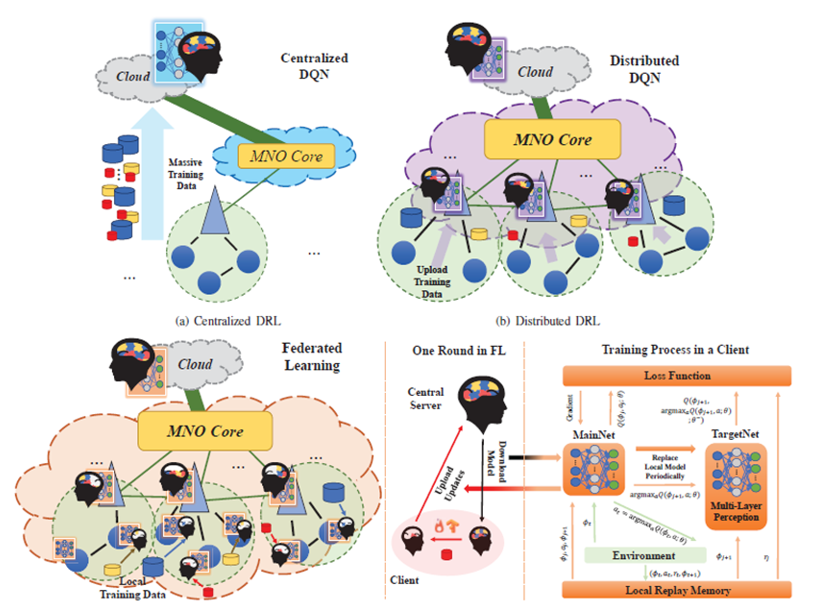The research group led by Professor Xiaofei Wang from the College of Intelligence and Computing of Tianjin University has made significant progress in the research of edge intelligent computing.

The development of mobile internet intelligence: from centralized DRL, to distributed DRL, and then to DRL with federated learning
As is predicted by some authoritative institution, by 2020, the number of IoT (Internet of Things) devices in the world will exceed 20 billion. On this scale, the traditional centralized cloud computing processing architecture will not be able to satisfy such a large number of computing tasks, and hence giving birth to the edge computing.
With the help of edge computing, large-scale data does not need to undergo the delay of cloud transmission, and is directly processed on the edge side, thereby greatly improving user service quality. However, under the framework of edge computing, how to realize intelligent information storage and transmission is a hot topic in both academic and industrial researches.
Instead of using the traditional modeling method, Professor Xiaofei Wang combined edge computing with artificial intelligence technology represented by deep learning and made them support and accelerate each other, effectively dealing with challenges brought by transferring from 4G to 5G, such as the diversity and fairness, self-applicability, multidimensionality, and scaling issues.
This mode is called “edge intelligence and intelligent edge” for 5G by Prof. Wang. With respect to edge intelligent computing, edge computing provides a high-quality computing architecture for artificial intelligence and a practical operation scheme for some delay-sensitive and computationally complex artificial intelligence applications. In terms of intelligent edge computing, artificial intelligence technology plays the role of decision maker in multiple aspects of edge computing, and optimizes resources management in the edge computing architecture, which has become an important technical pillar of edge computing.
The research result proves very essential for improving the 5G network transmission rate, meeting the ultra-low latency requirements, and realizing massive connections.
By Xiaofei Wang from the College of Intelligence and Computing
Editor: Eva Yin






